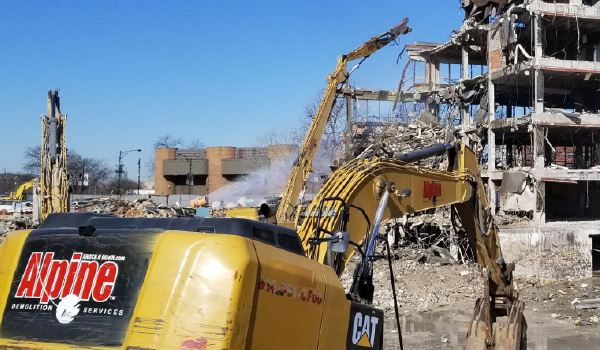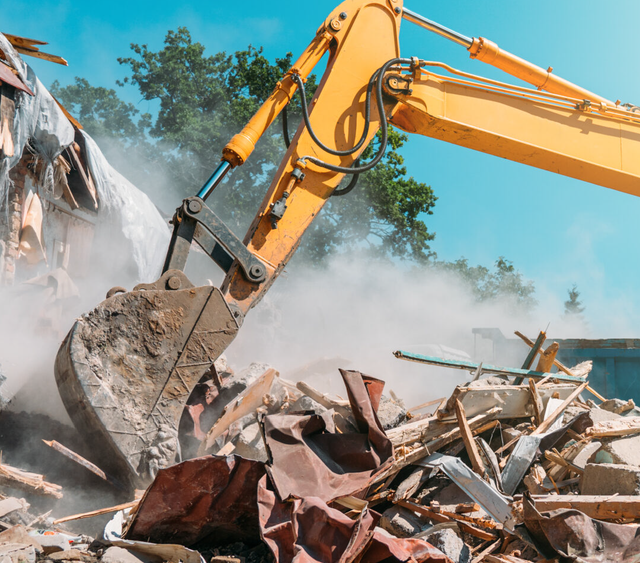Optimizing Space With Strategic Interior Demolition Preparation
Optimizing Space With Strategic Interior Demolition Preparation
Blog Article
The Ultimate Overview to Inside Demolition Techniques and Devices
Within the world of interior improvements, the art of demolition is a critical stage that needs precision, ability, and the right collection of devices. Whether you are an experienced expert or a DIY lover, recognizing the intricacies of interior demolition techniques can make all the difference in attaining a successful task outcome.
Essential Interior Demolition Devices
When undertaking interior demolition jobs, having the ideal tools is important for efficiency and security. Among one of the most important devices for interior demolition is the demolition hammer. This sturdy tool is designed to break through tough products like drywall, ceramic tile, and concrete. Its powerful hammering activity can rapidly destroy walls, floorings, and various other frameworks. Furthermore, a crowbar is important for eliminating fixtures, trim, and various other products. Its utilize permits the easy extraction of nails and other bolts without harming the surrounding surface areas - interior demolition.
One more vital tool is a reciprocating saw, which is perfect for puncturing a selection of materials such as plastic, steel, and wood. Its ability to make accurate cuts in tight areas makes it ideal for demolition work. An energy knife is needed for cutting products like carpet, plastic floor covering, and insulation. Its sharp blade makes sure accurate and tidy cuts, promoting the elimination of undesirable products. Generally, having these essential indoor demolition devices will substantially improve the effectiveness and security of any demolition task.

Safety And Security Safety Measures During Demolition

Furthermore, all workers entailed in the demolition procedure should get adequate training on the appropriate handling of devices and equipment to minimize crashes. By adhering to these safety and security precautions, interior demolition projects can be lugged out effectively while prioritizing the well-being of all people involved.
Strategies for Eliminating Walls
Implementing proper security preventative measures throughout indoor demolition jobs is crucial for producing a protected workplace, and one vital element of such jobs involves understanding strategies for removing walls. One generally made use of technique is hand-operated demolition, which calls for using standard hand tools such as sledgehammers, crowbars, and utility knives to very carefully take apart the wall surface item by item. This method enables greater control over the demolition process, specifically in delicate locations where accuracy is crucial.
For bigger, more complicated wall surfaces, mechanical demolition may be essential. This entails making use of hefty equipment like bulldozers or excavators to knock down wall surfaces effectively. However, it is vital to make certain that the structural stability of the building is not jeopardized throughout mechanical demolition.
An additional technique for website link eliminating walls is deconstruction, where the wall is dismantled in a manner that maintains multiple-use materials. This sustainable strategy is environmentally friendly and can also aid lower disposal costs. Whichever strategy is utilized, it is vital to adhere to proper safety and security procedures and consider the architectural ramifications of wall surface elimination to make certain an effective indoor demolition task.
Removing Floor Covering Like a Pro
Successfully getting rid of floor covering throughout indoor demolition requires the proper devices and methods to ensure a effective and smooth process. The initial step in eliminating floor covering is to get rid of the area of any furniture or obstacles. Next off, identify the type of flooring to identify the suitable removal method. For hardwood or laminate flooring, beginning by getting rid of the walls and after that make use of a floor covering scrape to lift and detach the slabs. Carpet elimination includes reducing the rug right into convenient areas and rolling it up for disposal. For tile or vinyl flooring, a carve or floor scraper can be used to tear up the sheets or ceramic tiles. It's necessary to wear safety equipment such as gloves, safety glasses, and a mask to stop injuries and exposure to dirt and particles. Furthermore, having a dumpster or designated disposal area all set for the eliminated floor covering materials is important for keeping a clean job atmosphere. By adhering to these strategies and making use of the right tools, getting rid of flooring like a pro can be attained effectively and effectively.
Appropriate Garbage Disposal Techniques
After efficiently getting rid of flooring utilizing the ideal devices and methods, the next important action in the indoor demolition process is executing proper waste disposal techniques. Correct waste disposal is vital for keeping a secure and tidy job atmosphere during and after demolition.

Professionals need to stick to additional hints regional regulations regarding garbage disposal to avoid fines and fines. Making use of professional waste monitoring services can enhance the disposal process and make certain conformity with ecological standards. By carrying out correct garbage disposal methods, indoor demolition tasks can be completed successfully and sustainably.
Final Thought
To conclude, interior demolition requires the usage of important devices and rigorous have a peek here safety preventative measures to make certain a effective and secure process. Techniques for eliminating walls and floor covering should be done thoroughly and efficiently to prevent any damages or mishaps. Appropriate garbage disposal approaches are additionally critical to keep a clean and well organized workspace. By adhering to these standards, indoor demolition can be completed effectively and with very little threats.
One of the most critical tools for interior demolition is the demolition hammer (interior demolition). Generally, having these necessary indoor demolition tools will substantially improve the efficiency and safety of any type of demolition job
Successfully getting rid of floor covering throughout indoor demolition needs the appropriate tools and techniques to make sure a smooth and successful process.After successfully getting rid of floor covering utilizing the ideal tools and techniques, the following critical step in the indoor demolition procedure is applying appropriate waste disposal methods.In final thought, indoor demolition calls for the use of essential devices and rigorous security precautions to make sure a secure and successful procedure.
Report this page